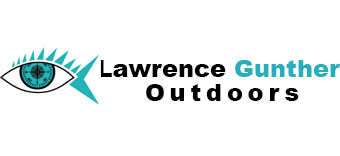
Plastic Fish Plastic Food
Eating fish is promoted as a super healthy food, but a University of McGill researcher, Laura McDonnell, recently went public about her decision to stop eating fish for fear of digesting the same plastics now showing up in some fish. How could this be, and is eating fish something that is truly dangerous to our health?
(Transcript of Lawrence Gunther’s bi-weekly 12-minute segment on Live from Studio 5 broadcast over AMI TV and Audio across Canada)
Q. Welcome back Lawrence, we hear about sea turtles eating plastic bags that they think are jelly fish, but do fish also make this same mistake?
A. Most predatory fish that we find in Canada, Trout, Salmon, Bass, Walleye, Pike and even Perch, primarily eat smaller fish. Since plastic bags and other plastic garbage don’t really resemble small baitfish, the problem is more with the food chain itself.
Q. Just how far down the food chain does this problem of plastic consumption go?
A. We are talking micro plastics. Tiny bits of plastic that can be found throughout our oceans and lakes and rivers bordered by large population centres. Plastics such as micro beads used in the manufacturing of personal care products such as toothpaste or facial scrubs, and other micro plastics that result from the continuous breakdown of plastic waste. Plastic never really goes away, it just gets broken down into increasingly smaller pieces.
Q. How do these micro plastics get into the food chain?
A. At the very foundation of the food chain, zoo plankton and phytoplankton mistake micro plastics for their food. These microorganisms are then eaten by small fish or minnows, which in turn begin the process of bio massing the plastics in their tissues. Each time you step up the food chain, the more concentrated things become like plastics or other harmful chemicals.
Q. We often hear about the plastic islands in the middle of the Pacific Ocean, is that where this is taking place?
A. Actually, only about 1% of plastics found in the oceans are concentrated in these dead zones in the middle of the oceans. Most plastics are found closer to human settlements such as along beaches or anywhere treated or untreated human waste is being released into our rivers, lakes and oceans. Scientists now find micro plastics in The Great Lakes using nets with very tiny holes dragged behind boats. These plastics suspend in the water as well as settle to the bottom.
Q. How dangerous can eating plastic be, after all we put our food in plastic all the time.
A. It wasn’t so long ago we started hearing about plastic refillable water bottles and baby formula bottles leaching certain harmful chemicals, and warnings about re-heating food in plastic containers using microwaves. We also now know that micro plastics in the environment become tiny sponges absorbing certain harmful chemicals and becoming toxic waste in the process. Never mind you are what you eat, when the plastic is toxic that just makes things that much worse.
Q. It sounds to me like the McGill University researcher might be on to something when she decided to stop eating fish.
A. I don’t think not eating fish is the answer. Most of us get our drinking water from rivers and lakes and the filters used to prepare that water for utilization in our homes isn’t screening out the smaller plastic pieces. The real issue here is our use of plastic, the fact it never goes away, and we keep making more of it. It’s becoming a major environmental and health issue and it’s up to all of us to think about how we use and dispose of it.
A. We are learning that micro plastics are being conveyed and deposited in the Arctic by ocean currents, that it’s showing up in all water that we utilize for dumping treated sewage, and even waves are generating micro plastics by grinding up plastic garbage on our beaches. The question is, when do we say enough-is-enough and start demanding that we stop producing and using throw-away plastic packaging. Banning micro beads from personal care products is a start, as is banning plastic bags.


